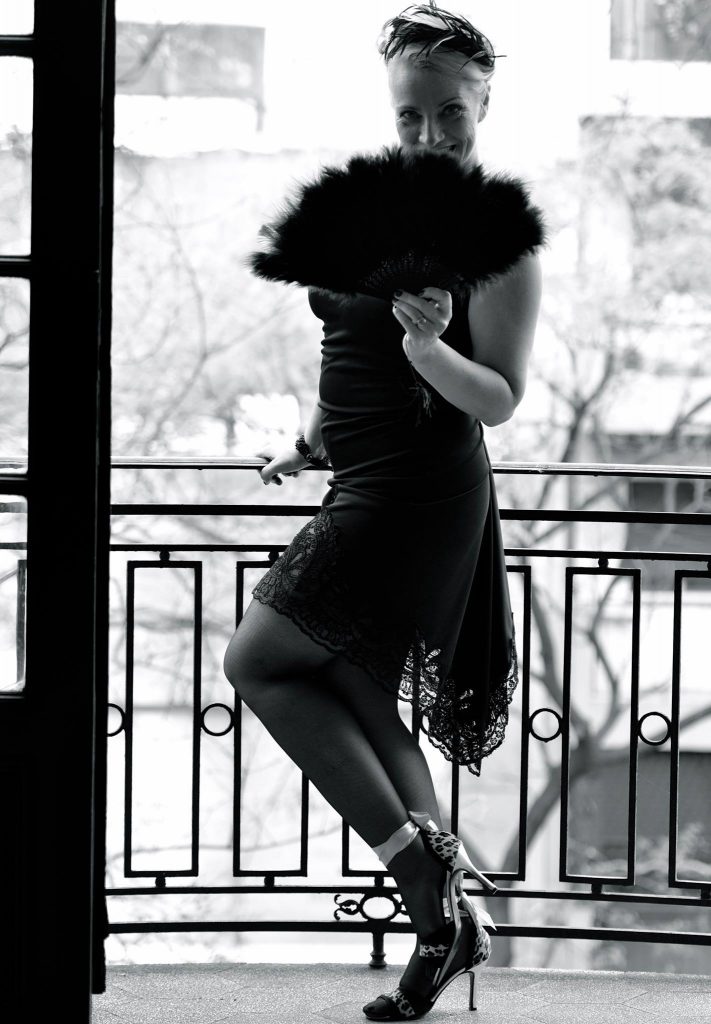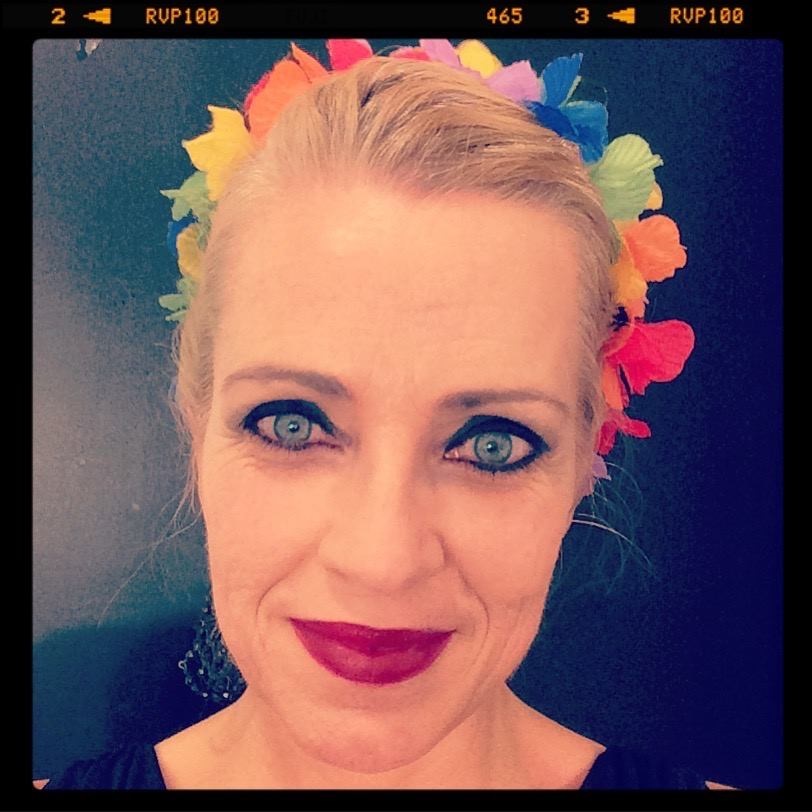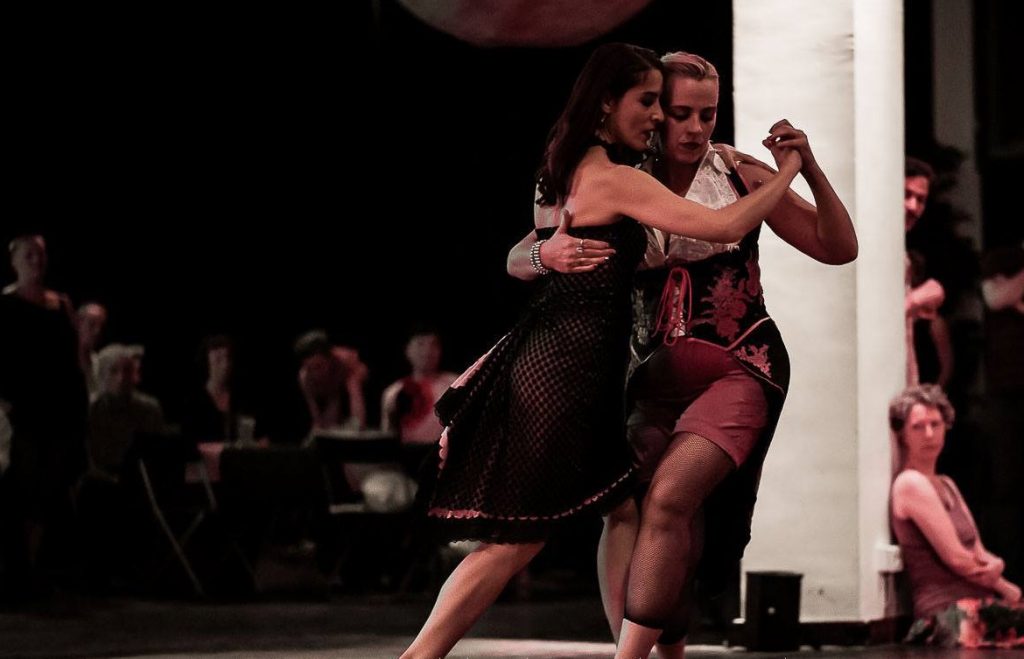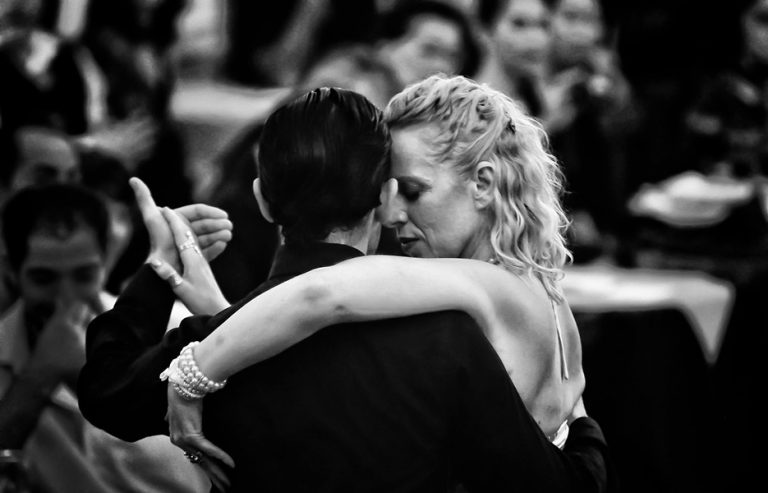Helen Halldórsdóttir opened the first gay friendly, traditional tango club and worked on establishing the first queer tango festival in Buenos Aires. This has lead to her teaching at queer tango festivals around the world. She says that such festivals are now growing more rapidly than traditional tango events.
Being from the North, blonde and blue-eyed Icelander Helen Halldórsdóttir – Helen La Vikinga – perhaps doesn’t fit the stereotypical image most people have of tango dancers. But then again, she’s never been keen on stereotypes and is well-known on the international tango scene as the brave Viking woman who’s aided tearing down the wall between female and male tango dancers.

She helped establishing the first queer tango festival in Buenos Aires shortly after she moved there in 2004. But why do queer people need a special environment to simply dance? “Because it’s frowned upon if two men are dancing together or if a woman is leading, especially in South-American culture. And even two women dancing together is not liked; I once went to a traditional tango club in Buenos Aires with a female friend and we were dancing together, me leading her. Then we were told that same-sex dancing partners weren’t allowed, which we found ridiculous and refused to comply, we’d rather leave the club.
That’s why I enjoyed going to gay milongas, even though I’m 150 percent straight. I liked the relaxed atmosphere there where you can choose whether you lead or follow no matter what gender or orientation you are, and without anyone raising an eyebrow. And then I myself opened the first gay friendly, traditional tango club, Bien Puelnta in Buenos Aires.”
And that’s how she got involved with the queer tango society; she opened a gay friendly tango club and worked on establishing the first queer tango festival in Buenos Aires, which then lead to her teaching at queer tango festivals around the world, amongst them the first of its kind in Mexico. “And also San Fransisco, New York, Berlin, Hamburg, Paris, Stockholm and Copenhagen. It’s become quite a thing, queer tango festivals are growing more rapidly than traditional tango events. There was a surge in tango interest just over a decade ago, but now most places are organizing queer tango festivals too.”
“It’s become quite a thing, queer tango festivals are growing more rapidly than traditional tango events. There was a surge in tango interest just over a decade ago, but now most places are organizing queer tango festivals too.”
Helen started dancing and teaching tango over 20 years ago when she was introduced to it while living in Chile. “I’ve also danced salsa a bit where one partner leads and the other follows, but there’s less choreography in tango so it’s a bit more intense, where one partner is more reliant on being lead by the other,” Helen explains. And adds that as tango’s history is rooted in the mating rituals of birds, it’s always been a dance that tells the story of a man wooing a woman and therefore a very macho dance with exaggerated gender-based dance roles.
“But it’s really just like theatre where the dancers take on roles, so it doesn’t matter who does what during the dance. But it’s a very macho thing, especially in Argentina; football and tango, one of the few frontiers that men had left. So it wasn’t very popular when I arrived and started leading, dancing with girls in traditional tango clubs. That’s how I got my nickname because they saw me as a brave, intrusive Viking woman, “que brava la vikinga!” so now I go by the name Helen La Vikinga.”

She explains that she struggled with being the one following when she first started tangoing, it wasn’t really in her nature. “It was a great challenge for me because I found it very difficult to go out dancing and allowing a man to be in control. But then I saw that my friends were able to be lead so I thought, “If I can overcome this, I can do anything.” It took me a few years to start appreciating being lead in the dance and not always having to show initiative, so I enjoy it now. But when I started teaching tango I had to be able to lead too so now I just shift between leading and following when I’m dancing tango; it doesn’t matter to me at all.”
People from around the world attend Helen’s tango classes in Buenos Aires and then she takes them out dancing. “I take them equally often to traditional tango clubs as the gay milongas and tango queer clubs and a lot of my students really appreciate the independence; the freedom to choose whether you lead or follow. If you’re a man, you can follow if you like and a woman can lead if she wants and that’s much more difficult in traditional tango clubs. At gay milongas and queer tango clubs, no questions are asked.”
Helen has lived in Iceland, Sweden, Chile and Argentina. She says there’s clearly a difference between the cultures in the cold and hot climates.

“Gay men simply couldn’t dance with other men at the traditional tango clubs in Buenos Aires, so there was much need for gay milongas and queer tango places, whereas there wasn’t nearly as much need for it in Sweden, where I tried to establish such a place too. It just wasn’t that big of a deal to see two men tango with each other there, while in Buenos Aires it was considered outrageous. But I think that now, because we’ve got these gay friendly clubs, it doesn’t draw as much attention anymore, seeing same-sex pairs dancing tango.”
“Gay men simply couldn’t dance with other men at the traditional tango clubs in Buenos Aires, so there was much need for gay milongas and queer tango places.”
And of course, everybody’s welcome to the gay milongas and queer tango clubs, even heterosexuals. “I’d say a large portion of those who attend are heterosexual, especially women, and in the queer tango clubs, it’s probably close to fifty-fifty. Perhaps heterosexual men find it slightly more difficult to dance with another man but many of them are cross-dancers so they’ve learnt both to lead and follow and it shouldn’t matter who they’re dancing with. There doesn’t have to be a correlation between gender or orientation, and the role you take in tango.”
Helen travels around the world, teaching tango and participating in tango festivals. She’s now visiting her native country of Iceland, giving tango lessons at the headquarters of Samtökin ’78 this forthcoming weekend and teaching there a tango class tomorrow night and DJ-ing afterwards as well. “I held an introductory course there earlier this year. Tomorrow night there will be an introductory course as well at Samtökin ’78 and then there will be two follow-up courses this weekend, so perhaps we can start some sort of queer tango culture here as well.”



